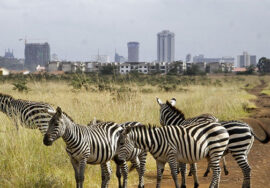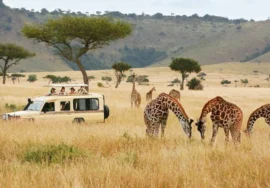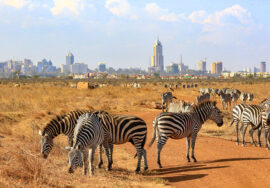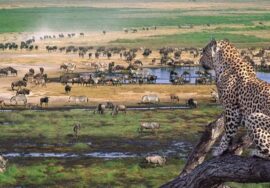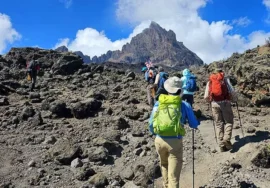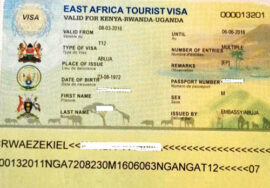LION AND RHINO HI-TECH TRACKING
LION AND RHINO HI-TECH TRACKING, Many times, people tell us that our technology is what hurts the natural world’s wildlife. But here’s a new piece of technology that’s actually keeping lions, rhinos, cheetahs, and other endangered species safe. And you can be a part of it on your visit to Africa.
We’re talking about the creation of small, light radio collars that are gently put on big cats and rhinos to track their moves. This helps protect them from poachers and lets nearby herders know about the animals’ whereabouts so that people and animals don’t have to fight.
These new tracking tools help and even protect our threatened wildlife in a lot of different ways. You can be right there in the middle of this amazing work to protect the environment. Imagine that you are in a 4×4 Jeep or even on a guided walking tour. Rangers and guides are setting up their electronics and you see a lion, cheetah, or rhino nearby.
As you move forward slowly, you get incredibly close to the animal being watched. You can see the radio collar around its neck. It sends messages not only to your team but also to receiving stations and sometimes even satellites, keeping a record of where that animal goes.
Why Keep an Eye on the Animals?
Fourteen years ago, there were 43% more lions than there are now. The prides only live on 8% of the land they used to live on. Africa used to have about 200,000 people, but now there are only about 20,000. Why? Animals and people fighting, sickness, drought, and other problems can happen because of habitat loss.
Rangers and conservationists keep an eye on the animals to learn about their migration and movement habits, how they act around people, how diseases spread, and when cubs are born or animals die.
This knowledge is very important for reducing human interference, reducing conflict between people, and quickly looking into why animals die.
How does it work?
The process starts with the radio collar, which is a very small and light GPS device that is put around the animal’s neck. Qualified vets use tranquilizer darts to put animals to sleep for a short time. Since the bands only weigh 1% of the animal’s weight, they don’t get in the way of their ability to hunt or move.
A radio-controlled drop-off device can be used to remove the collars later from a distance.
Once the collars are put on, they send signals to nearby receivers or to satellites, which then send the data to a monitoring point. The signals can be sent intermittently or continuously.
Portable receivers, like the one your safari guide uses to find the animal, can also pick up these messages. In some conservancies, there are even tracking stations with big screens where safari-goers can see real-time tracking data.
How We Keep the Animals Safe
Lions and cheetahs will often go past the places that are protected by national parks and conservancies. Now is the most dangerous time for them. Rangers can tell when they might be close to places with people or animals by watching how they move and what they do.
These are the kinds of events that can cause problems between people and put the animals’ safety at risk. Animal lovers can be warned ahead of time to stay away from roaming animals if they are given enough notice.
The outcomes have been good news. At one point, there were only 11 lions living in the Ewaso area in northern Kenya. Since tracking and conservation efforts began, that number has grown to over 50.
And where can I go on safaris to track animals?
What’s the key to going on vacation with a watch team? Get in touch with the private conservancies. These parks are next to unprotected places and have the money to set up an electronic tracking system.
In private parks close to Masai Mara Park, like Ol Kinyei Conservancy, the Mara Predator Conservation Program uses tagged animals that are linked to satellite systems to keep an eye on them.
The Ewaso Lions program has been keeping an eye on the big cats in the Samburu, Buffalo Springs, and Shaba Reserve areas and bringing environmental issues to the attention of the people who live there.
The tags have been put on a number of lionesses from different prides and can be tracked in the Mugie Conservancy, which is north of Nairobi. The Kenya Wildlife Service (KWS) keeps an eye on the prides’ moves and lets the herders in the area know where the lions are so they can protect their flocks.
The number of predators in Ol Pejeta Conservancy is one of the biggest in Kenya. You should be able to get close to lions on a tracking tour. You will use a receiver to help the researchers learn more about the pride. The neighborhood monitoring unit looks at this information to help protect the wildlife in the area.
You can also go rhino tracking.
Start a very different kind of tracking trip in northern Kenya’s Sera Community Conservancy. You can go on a walking safari with a professional guide and ranger who will lead you close to one of the collared rhinos in the 25,650-acre reserve.
You’ll start in your 4×4 Jeep and look for the electronic signs coming from the rhinos’ collars. When you find an animal, you will walk slowly until you are just meters away from a rhino that is eating.
Set up your reservations right away
Would you like to help with a project to track animals online and discover important facts about them? We only need you to tell us when you book. We will need to make plans a long time in advance for this type of trip because it is very technical and unique. There are times when a certain number of people must attend, and the tracking trip is always subject to the weather.
You can improve your chances of seeing endangered species while also helping them grow. That’s absolutely amazing.

